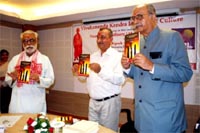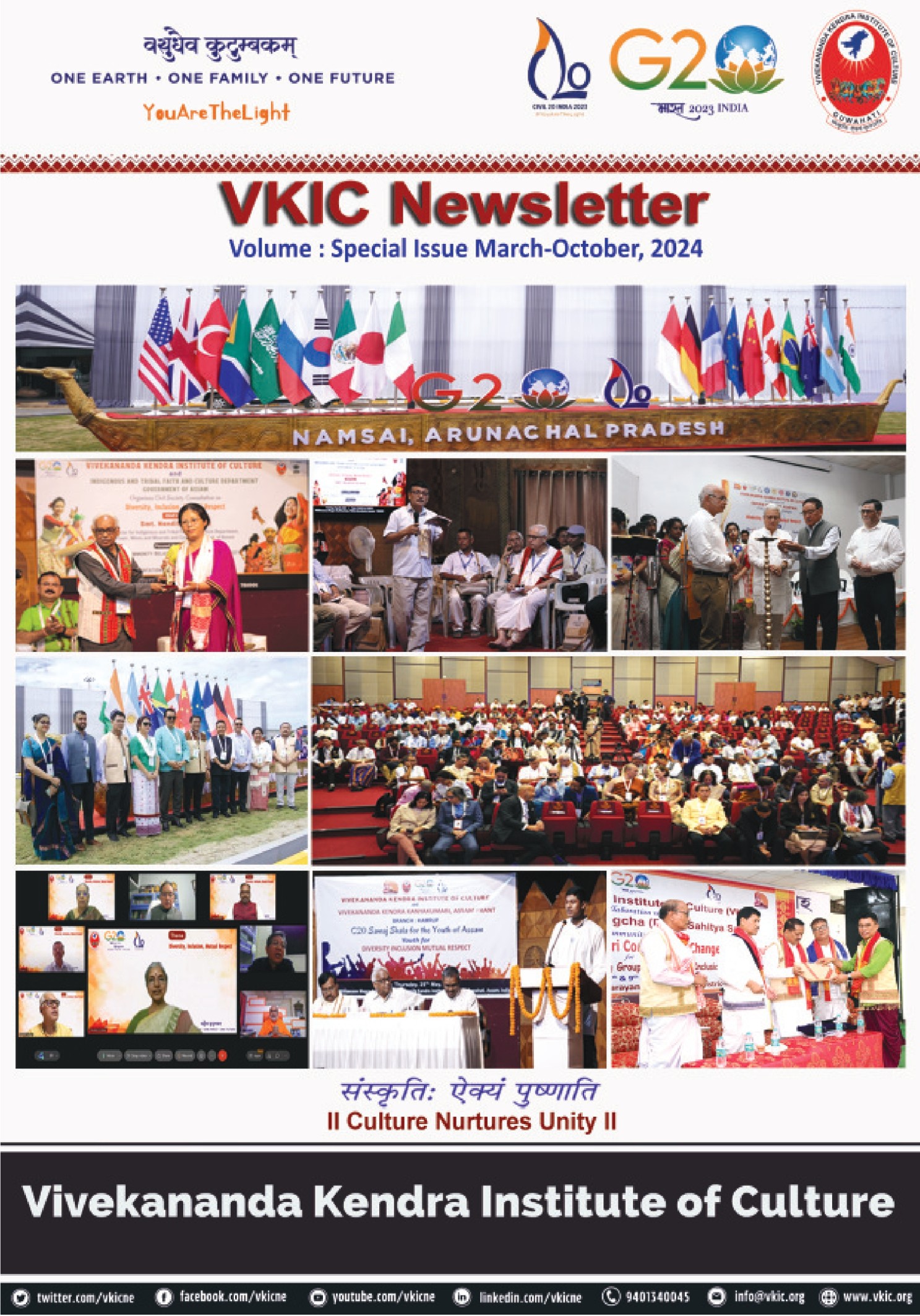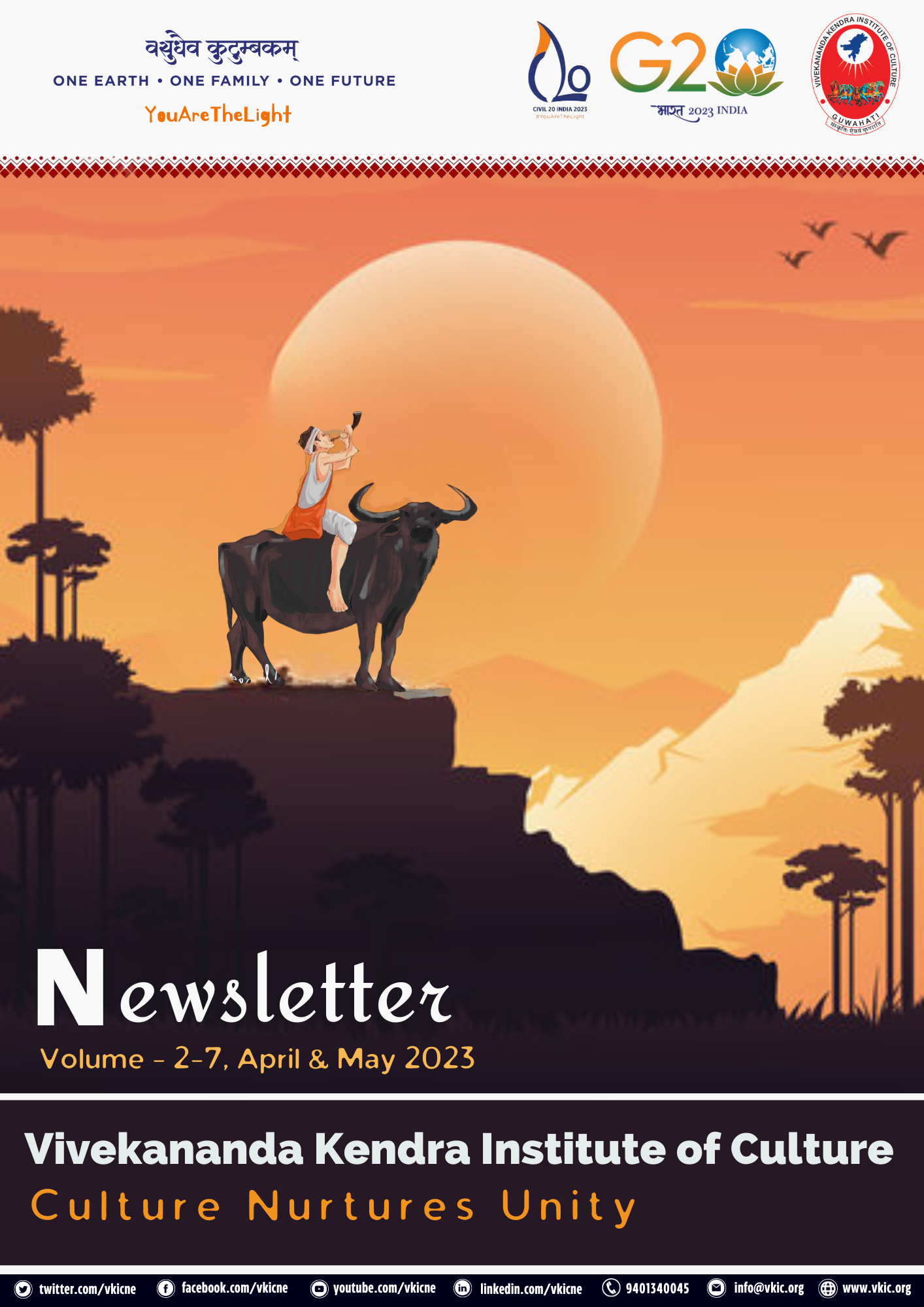 The latest VKIC Publication, The Main Ceremonies of the Khasi was released on the occasion of the inauguration of the NRL CONFERENCE HALL at the Vivekananda Kendra Institute of Culture [VKIC], Guwahati, by Shri Dipak Chakravarty, Managing Director, Numaligarh Refinery Ltd. Originally written in Khasi by KS Marbaniang, Sitimon Sawian and Wallamphang Roy, they have been translated into lucid English by the well known author of Shadow Men, Bijoya Sawian. It is a compilation of three of the most important ceremonies of the Khasi -the naming, marriage and death ceremonies. These ceremonies demonstrate the cultural practices of a community; moreover, abiding social relationships come to the fore.
The latest VKIC Publication, The Main Ceremonies of the Khasi was released on the occasion of the inauguration of the NRL CONFERENCE HALL at the Vivekananda Kendra Institute of Culture [VKIC], Guwahati, by Shri Dipak Chakravarty, Managing Director, Numaligarh Refinery Ltd. Originally written in Khasi by KS Marbaniang, Sitimon Sawian and Wallamphang Roy, they have been translated into lucid English by the well known author of Shadow Men, Bijoya Sawian. It is a compilation of three of the most important ceremonies of the Khasi -the naming, marriage and death ceremonies. These ceremonies demonstrate the cultural practices of a community; moreover, abiding social relationships come to the fore.
The book, The Main Ceremonies of the Khasi, evidences the simplicity, elegance and depth of the Khasi social and philosophical outlook. The ceremonies, stemming out of a dharmic way of life, establishes the organic connection between the individual and the society in close relation with nature while simultaneously demonstrating the foresight of our ancestors.
Writes Dr Joram Begi, Director, Higher and Technical Education, Govt of Arunachal Pradesh and Member, Research Advisory Council, VKIC,
The book is an elaborate description of the traditional practices of the Khasi community practiced since time immemorial and handed down carefully to the next generation. It reflects the strong clan system and well-knit social order of the society. The book will be useful to followers of indigenous culture in particular and researchers of the subject in general.
With the passage of time some amongst the Khasis might not be in touch with their traditional practices. To all such, who deep within are again looking for a holistic basis, this book is a document of great importance. It shows that underlying all the ceremonies, is the scientific clarity of our ancestors – that no person is alone and unconnected; that all are finally part of the Whole and that only when our way of life is in tune with this Consciousness, can harmony be established at the personal and collective levels. The book thus becomes an important guide to re-connect meaningfully with one’s roots.


